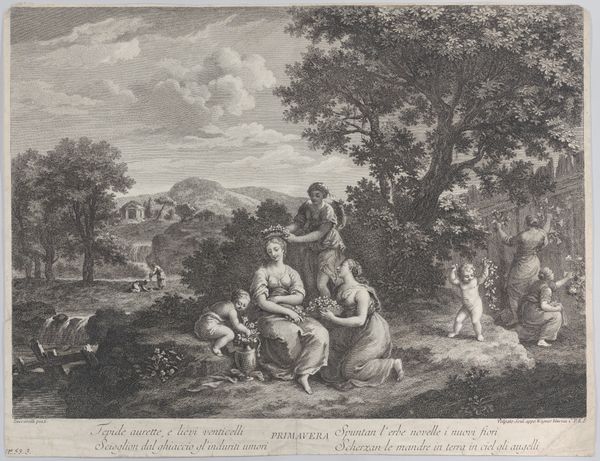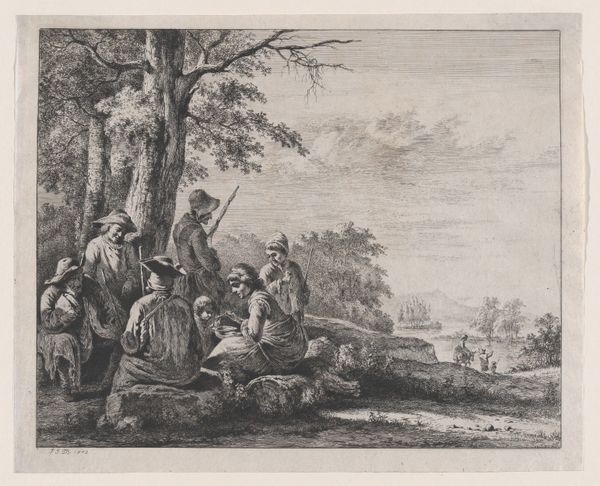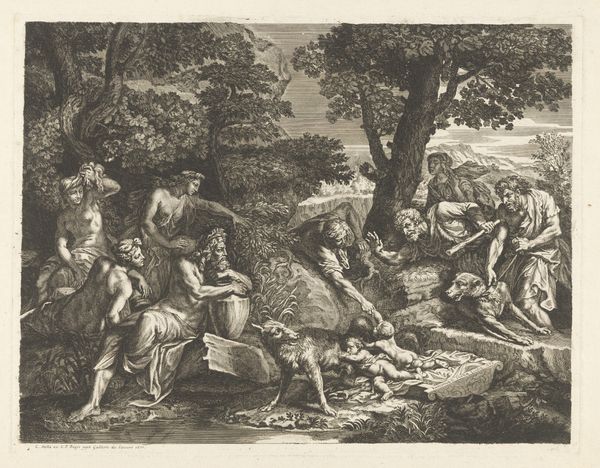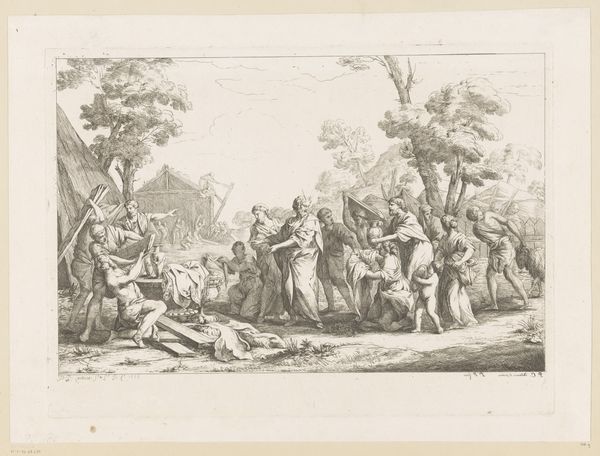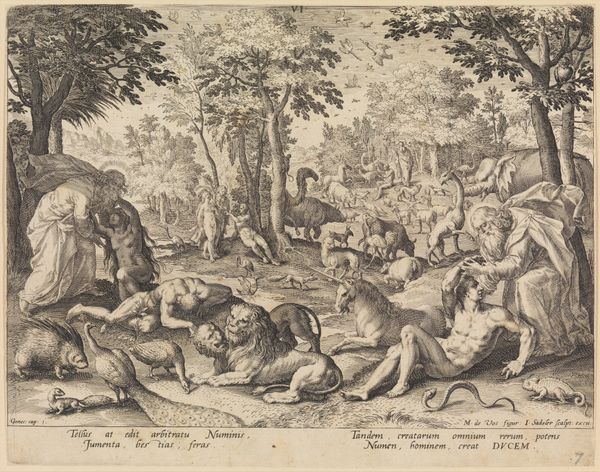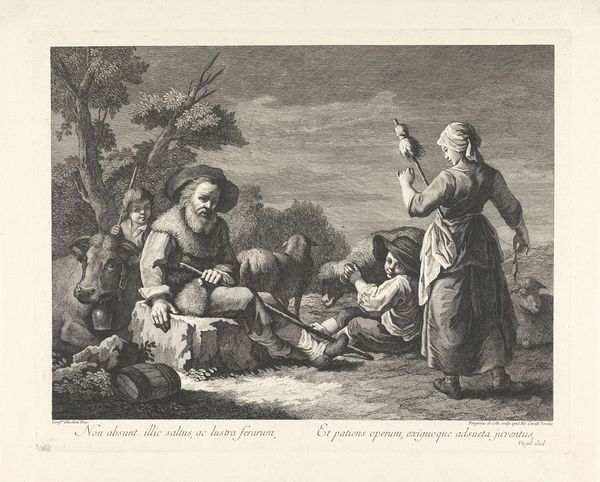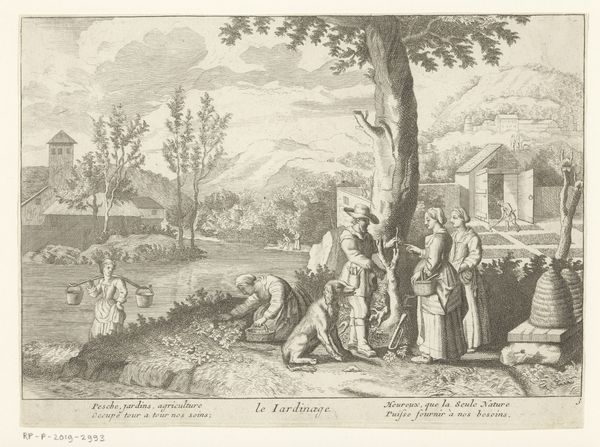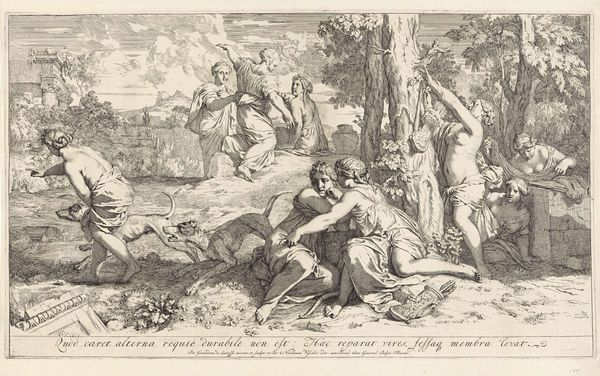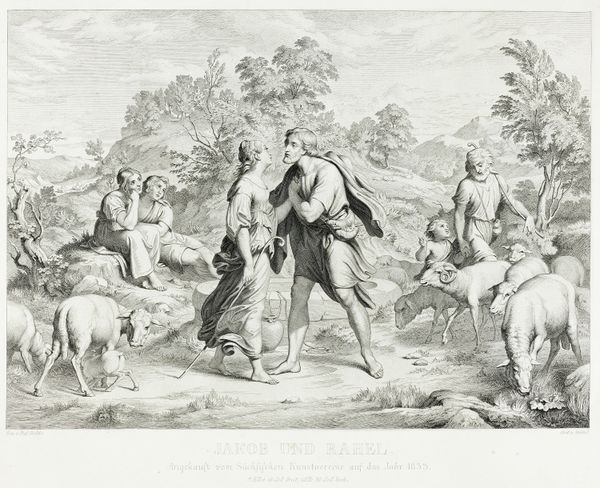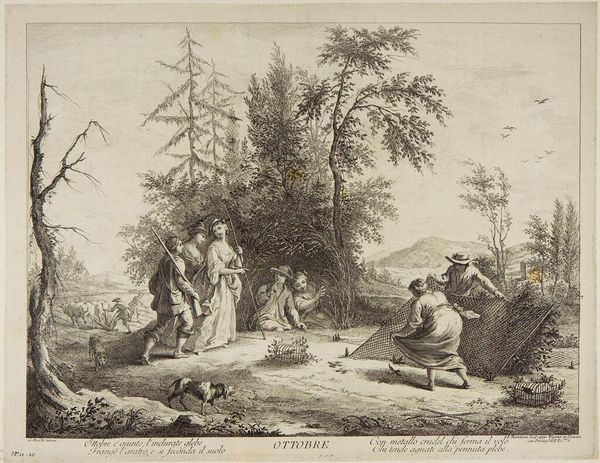
print, engraving
#
baroque
# print
#
old engraving style
#
history-painting
#
engraving
Dimensions: height 215 mm, width 263 mm
Copyright: Rijks Museum: Open Domain
Curator: This is a print entitled "Baptism of Christ," made before 1700 by Jan van Orley. It depicts a very well-known biblical scene. Editor: It's incredible to think about the physical labor and skill involved in creating this intricate engraving. The density of lines, the texture... it's almost overwhelming! Curator: Absolutely, and Orley uses that texture to frame a scene deeply rooted in theological debate of the era. We see John the Baptist, on the right, anointing Christ in the River Jordan. Note the spectators – their gestures and expressions would be instantly recognizable to a 17th-century audience versed in religious iconography. Editor: The lines almost feel etched into the landscape as well as the figures. I wonder about the different tools he used, and the pressure he had to apply. Consider the economics of printmaking at that time – these images were designed to be reproduced, distributed, and consumed. Curator: That's precisely right. This image wasn't simply about artistic expression, it was about accessibility. Prints like these helped spread religious and historical narratives throughout society, making them incredibly influential visual documents of their time. The printing press helped transform culture. Editor: It makes you consider the politics inherent in imagery when it's mechanically reproducible and circulating widely. Think of who commissioned these engravings, and what messages they wanted to convey. Were they consumed by all members of society? Curator: Undoubtedly. The imagery acted as propaganda; shaping belief systems through art was of vital interest for members of both the Church and aristocratic elite. Editor: Well, seeing the work through that material and historical lens, you know, makes it really stand out, even now. Thank you for sharing your thoughts. Curator: And thank you. It's essential to remember these works operated in a specific cultural environment. We can't forget that history.
Comments
No comments
Be the first to comment and join the conversation on the ultimate creative platform.

